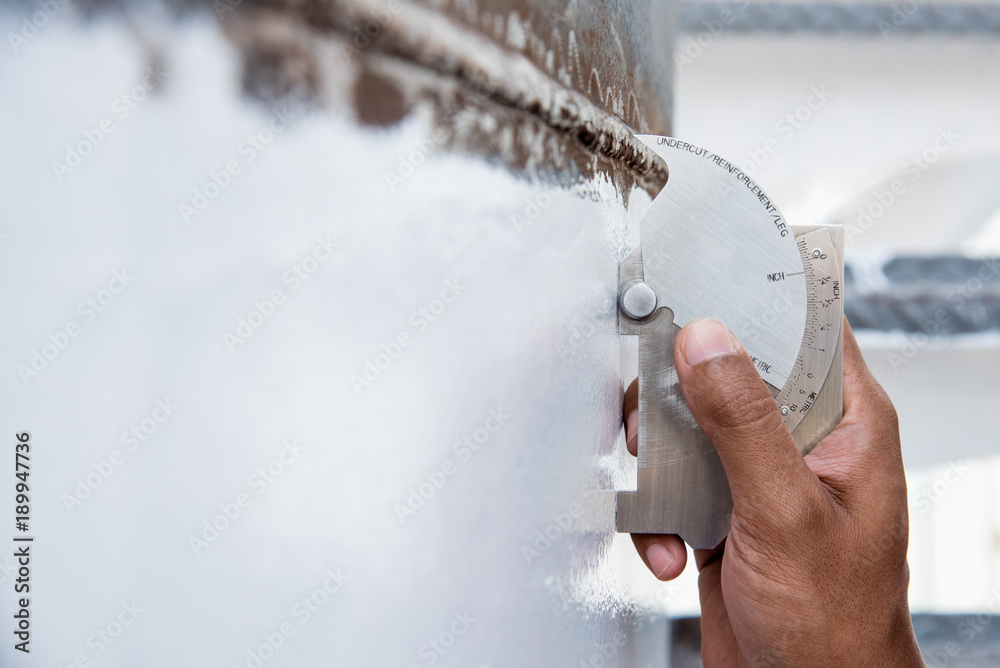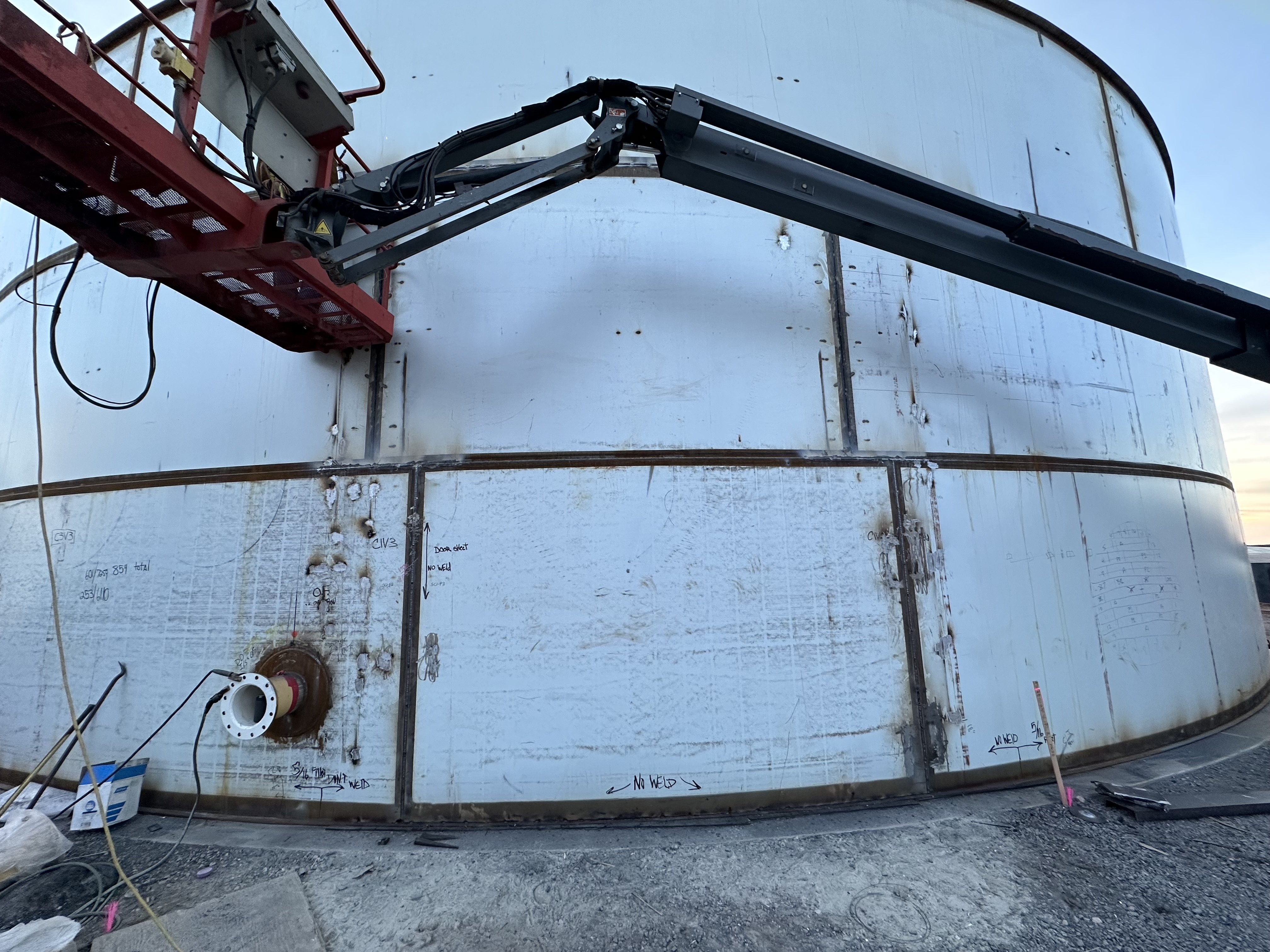Best Practices for Effective Tank Welding Inspection Processes
Best Practices for Effective Tank Welding Inspection Processes
Blog Article
The Necessary Duty of Storage Tank Welding Assessment in Ensuring Structural Honesty and Security Compliance in Industrial Applications
In the realm of industrial applications, storage tank welding examination arises as a critical component in protecting structural stability and guaranteeing conformity with safety laws. Utilizing a mix of techniques such as aesthetic evaluations and progressed screening methods, these examinations offer to identify and minimize potential defects before they escalate into considerable hazards.
Significance of Storage Tank Welding Assessment

Making sure conformity with sector standards and laws is another substantial facet of tank welding inspection. Regulatory bodies mandate stringent guidelines for the construction and upkeep of tank, and thorough inspections help organizations stick to these requirements. Non-compliance can lead to severe fines, consisting of fines and closures, even more stressing the requirement for strenuous inspection procedures.
In addition, container welding evaluation plays an essential duty in preserving operational performance. In summary, the relevance of storage tank welding inspection exists in its capability to protect public health and wellness, secure the environment, and make certain compliance with regulative structures.
Trick Examination Strategies
Reliable tank welding inspection relies upon a range of key methods that make certain extensive analysis of weld quality and architectural integrity. Among the most widespread techniques are visual assessment, ultrasonic screening, radiographic testing, and magnetic bit screening - Tank Welding Inspection. Each approach supplies special advantages in analyzing various aspects of the weld
Visual examination serves as the first line of protection, permitting inspectors to determine surface area issues, abnormalities, or inconsistencies in the weld bead. Ultrasonic screening uses high-frequency sound waves to detect internal defects, such as cracks or gaps, supplying a thorough analysis of weld integrity. This method is specifically efficient in spotting problems that might not be noticeable externally.
Radiographic screening makes use of X-rays or gamma rays to generate pictures of the welds, disclosing interior suspensions and offering a long-term record for future recommendation. This technique is highly effective for vital applications where the risk of failing should be reduced.
Finally, magnetic particle testing is employed to recognize surface area and near-surface flaws in ferromagnetic materials. By using electromagnetic fields and fine iron particles, assessors can pinpoint stoppages that could jeopardize the structural stability of the container. Together, these techniques form a robust framework for guaranteeing top quality welds in industrial this contact form applications.
Conformity With Security Requirements

Regular inspections play an essential role in ensuring conformity by identifying potential failings or inconsistencies from recommended criteria. Examiners are educated to review weld top quality, validate material requirements, and assess the overall architectural integrity of containers. Their experience is important in making certain that welding processes meet the required safety and security standards.
Moreover, conformity with safety criteria not only secures employees but likewise safeguards the atmosphere from prospective threats such as leakages or devastating failings. Organizations that focus on safety conformity are much better positioned to reduce dangers, boost operational effectiveness, and cultivate a society of safety within their labor force. In recap, maintaining rigorous conformity with safety standards is crucial for the successful operation of storage tank welding tasks in commercial setups.
Advantages of Regular Examinations
Normal examinations are integral to maintaining the structural honesty and safety and security of welded containers. These assessments offer an organized approach to identifying prospective problems or weaknesses in the welds, making sure that any type of concerns are addressed before they intensify into considerable failures. By carrying out routine evaluations, organizations can detect rust, exhaustion, and other types of wear and tear that may jeopardize storage tank performance.
Furthermore, constant inspections contribute to conformity with market guidelines and requirements. Abiding by these guidelines not only reduces legal threats but additionally boosts the organization's track record for safety and security and reliability. Routine inspections cultivate a positive security culture, urging employees to identify and focus on the value of devices honesty.

Study and Real-World Applications
Study and real-world applications show the concrete impact of effective container welding assessment practices. One remarkable instance is a large petrochemical center that dealt with significant operational disruptions because of leaks in tank. Complying with the execution of extensive welding inspection methods, including aesthetic and ultrasonic screening, the facility identified important imperfections in weld joints that could have brought about devastating failings. This positive strategy not only protected against ecological risks but additionally saved the business millions in potential cleanup prices and regulative penalties.
Likewise, a water treatment plant implemented a thorough evaluation you can check here program for its container welding procedures - Tank Welding Inspection. By incorporating non-destructive testing techniques, the plant had the ability to detect early indications of corrosion and fatigue in weld joints. This prompt intervention extended the lifespan of the storage tanks and made sure conformity with safety and security laws, thus protecting public wellness
These instance research studies underscore the value of normal and organized container welding inspections. By prioritizing these practices, industries can reduce threats, boost structural honesty, and ensure compliance with safety standards, ultimately leading to improved operational efficiency and reduced obligations.

Final Thought
To conclude, storage tank welding assessment is browse around these guys a vital element of preserving structural integrity and safety and security in commercial applications. Using various examination strategies makes sure early discovery of possible problems, thus preventing catastrophic failings. Adherence to safety standards further boosts functional integrity and conformity with regulative needs. Eventually, routine inspections not just shield public health and the setting however also add to the durability and efficiency of critical possessions, highlighting the important function of this technique in industrial procedures.
Report this page